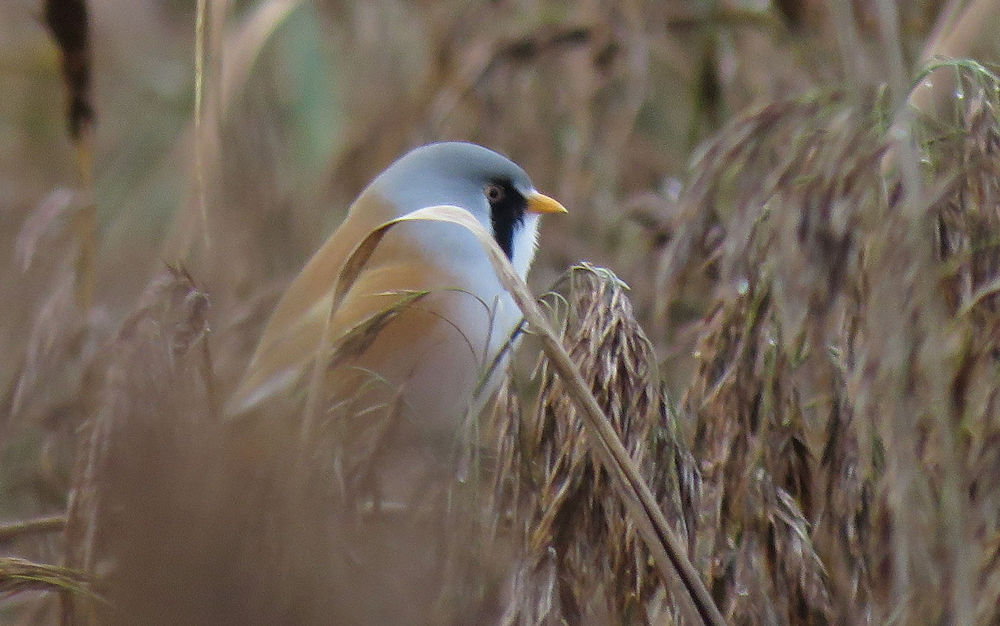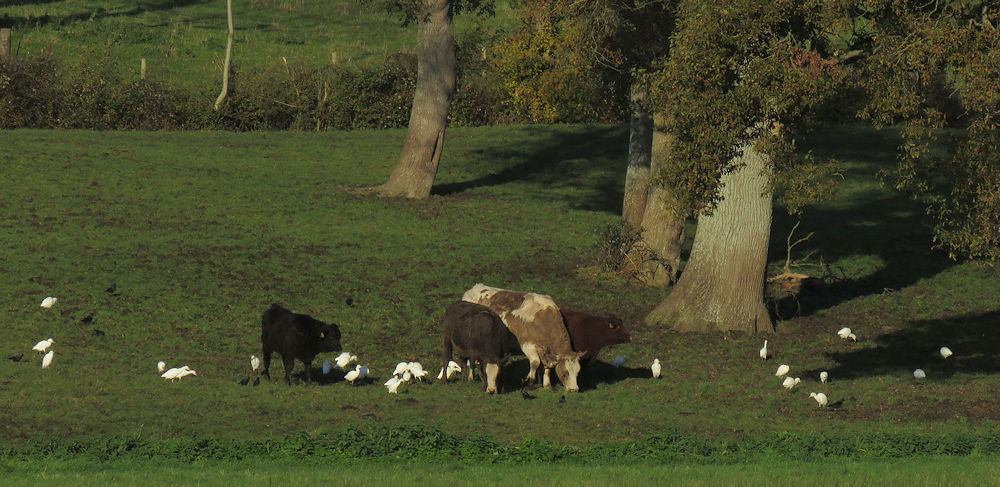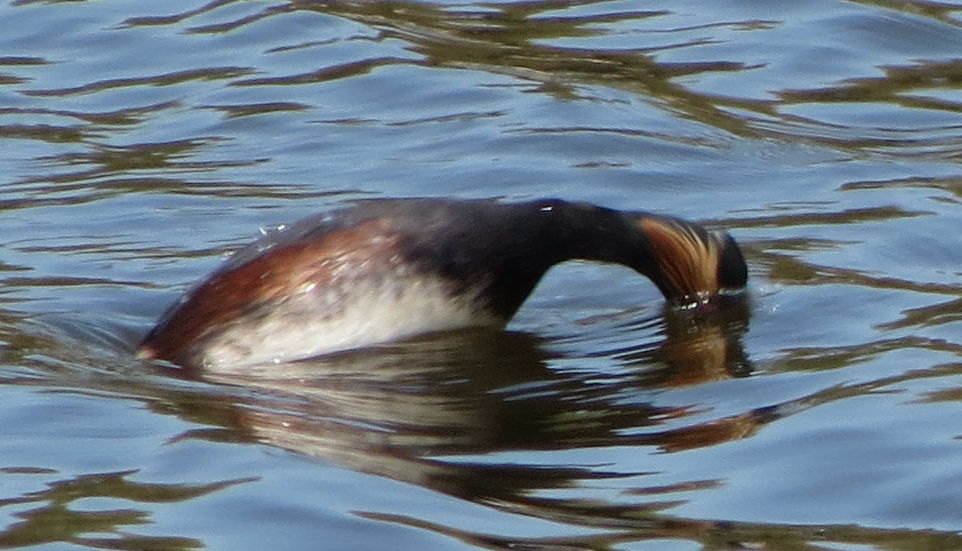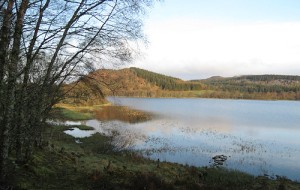A little silence on the blog doesn’t indicate a lack of activity! Here are some of my birding highlights of the last few months.
One morning in September, I was watching a Great White Egret and a Grey Heron; as they were fairly close to each other, I was hoping to get a decent photo of the two of them. When the egret flew close to the heron I thought I had my opportunity – but I should have known that they really don’t like each other. Nevertheless, their mutual antipathy led to a more dramatic sequence of photos than I’d originally envisaged: it illustrates the characters of the heron and the egret that would otherwise have remained hidden in the more placid photo that I’d had in mind.

A few minutes previously I’d spotted a bird I’d never seen before in this area – an Egyptian Goose. Although they have been seen locally, as far as I was aware this was the first time on Shapwick Heath this year. It is a very distinctive goose, native to southern Africa, but has naturalised in the UK and other countries after escaping from collections.

Later that day I headed off to Steart, as I’d heard that there were spoonbills there. Last year a few had stayed over the whole winter; this year, despite hopes of local birdwatchers, the small number that appeared were merely passing through on migration.

A few days later I went on a guided walk on Shapwick Heath to look for bearded reedlings. The walk was very well led by Kevin Anderson, one of the team from Natural England. The reserves in this area provide a hotspot for them, but for much of the year they are elusive birds because of their fondness for lurking low down in reedbeds. In the autumn they become more visible, partly because of the quantity of seed available at the tops of reeds, and partly because some of them will migrate. This photo isn’t particularly good, but it does capture the context quite nicely!

There’s a particular herd of cattle below the village of Mudgley that seems to attract the local cattle egrets. I rather liked the feel of this image as a ‘typical English country scene’ – ironic given that it’s only in the past couple of years that they have been seen in any numbers in this country, with the Somerset Levels being a stronghold.

There’s a Tawny Owl on the Levels that sometimes gives good views, but it doesn’t take much for it to be spooked into disappearing. This photo was taken in early morning sunshine.


My best sighting of the winter was quite by chance. We were down in Cornwall after Christmas, staying on a farm near Stithians. One afternoon we went for a walk on the north side of the Helford River. Before heading back to the car, we stopped for a short rest, so I scanned the river to see if there was anything interesting. To my amazement, I immediately saw an interesting grebe in winter plumage. It was too far away to be easily identified and, together with the choppy water, it was a while before I could get a good enough photo. When I did, I identified it as a black-necked grebe. While a group of them had been reported on the Fal river nearby, these were the only others reported around the Cornish coast over the winter.
Rather more expected were the choughs on the Lizard peninsula. I’ve seen them a few times but this was the first occasion I was able to get close enough for a photograph.

One Friday in January, we went to Wells. In the early afternoon we realised that Joshua needed a nap, so we took him for a walk in his pushchair. I suggested we went round the moat. There was an ulterior motive, as this has become a good site for kingfishers, but I didn’t think we’d be there long enough to see one, especially as we weren’t going to be hanging around much. To my surprise, one arrived across the water virtually opposite us, and I took the photo almost from the back of the pushchair!

Near the end of January, I spent a dull grey morning at Noah’s Lake. The highlight was probably a cormorant that fished just below the hide. What it lacks in prettiness it makes up for in character!

On my way back from Shapwick Heath that morning, I noticed a buzzard at the edge of the Ham Wall reserve. It was initially on a telegraph pole, but as I stopped, it inevitably flew off – but then landed a fairly short distance away. It then flew to a further tree – but it was now in a more picturesque setting, and still close enough for a decent photo.

Later that week, we went to Slimbridge for the day. As we walked down to the new (and impressive) Estuary Hide, I was telling Jen about how difficult it is to see water rails (because they skulk around reedbeds, only rarely dashing in and out of view) – but that, along this very path a few years ago, I’d seen one that often visited the ground below a bird feeder. As we passed one of the hides I noticed a gaggle of photographers focused in one direction – and to my astonishment, below a bird feeder, was another showy water rail!

My favourite photo of the winter was after lunch that day – a Black-headed Gull obligingly perched on a post on the walkway outside the centre. Joshua was fascinated by it – the first time he’s obviously taken an interest in bird life!

Note also his blue hat. A few moments later he dropped it into the water. I reached for it, but it drifted away. I rapidly tried to find my camera monopod, which is quite long when extended – but by the time I’d found it, the hat had drifted still further. By this time Joshua was getting upset that he was losing his blue hat. Then Dave, one of the wardens, appeared, brandishing a very long pole normally used for restraining water fowl – but now it had another usage! A couple of moments later, he landed a sopping wet hat on the ground beside us – we were delighted!
Slimbridge is well known as a wintering site for Bewick’s swans. They breed on the Arctic tundra of northern Russia, but to avoid the ravages of winter many of them fly 3,500km to Britain – about one hundred of them to Slimbridge. It’s a treacherous journey: many are found to be carrying lead shot from hunters. About fifty years ago it was discovered that their bill patterns are subtly distinctive, so individuals may be identified. From this it was found that they pair up for life.

Birds in flight are generally beyond my photographic capabilities – one generally needs a fast focus, which my camera lacks – but I had some luck at the Greylake reserve earlier this month. A marsh harrier was gliding over, causing havoc for the ducks – but it was slow enough that for once I could focus on it. These ducks (wigeon and teal) were in fear for their lives – but they were too fast for the harrier, which dropped through the flock without so much as a feather to show for it.

I’d not been to the Barbara Handley hide on Shapwick Heath until earlier this month – so was impressed by the large number of well-stocked bird feeders there. A Great-Spotted Woodpecker clearly appreciated this small, dead tree trunk!

Shortly after seeing the woodpecker, I had a few minutes at the Canada Lake hide. It’s often a good site for kingfishers – but not on this occasion. However, there was a pair of Great Crested Grebes, one of which swam obligingly into view.





















